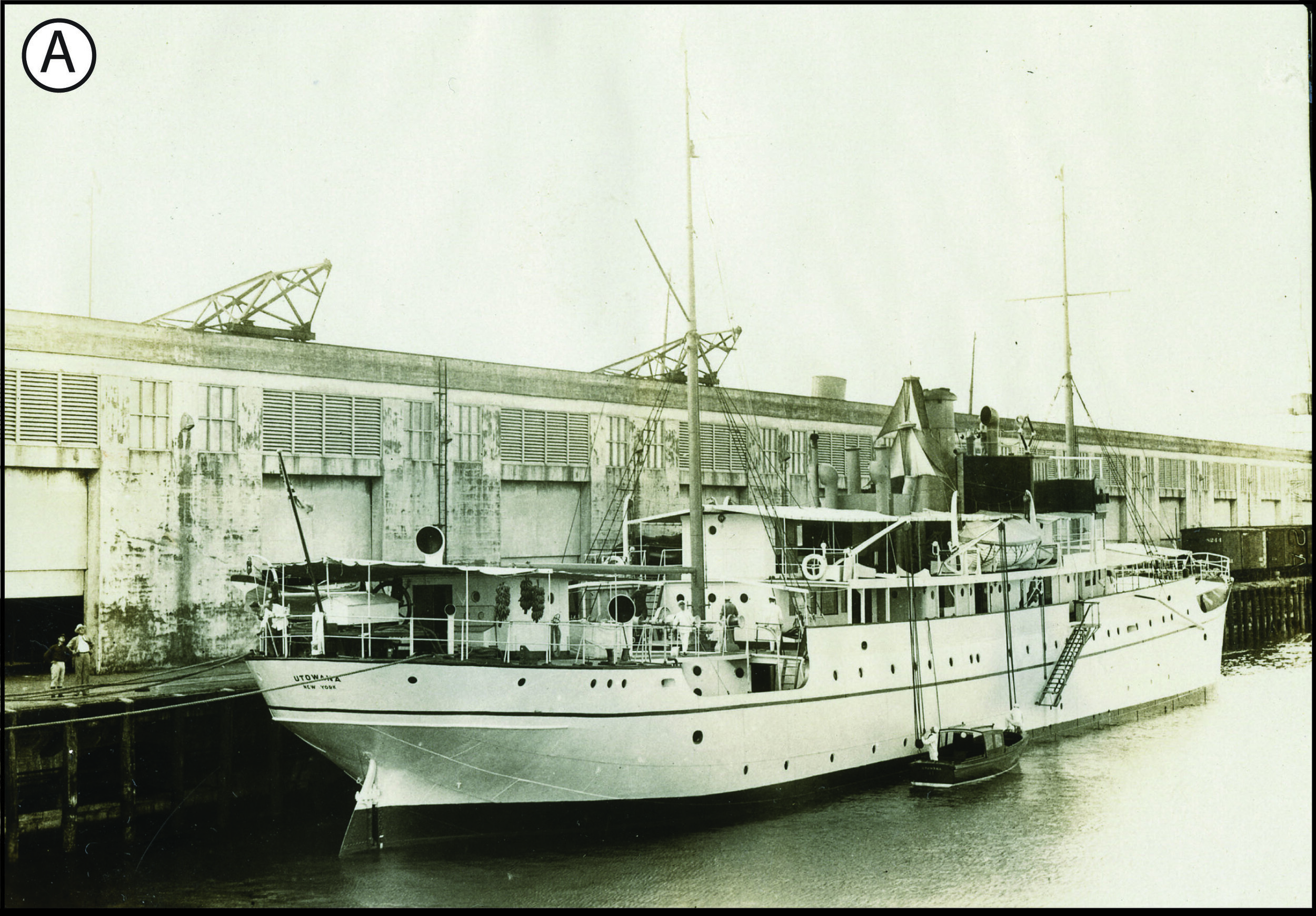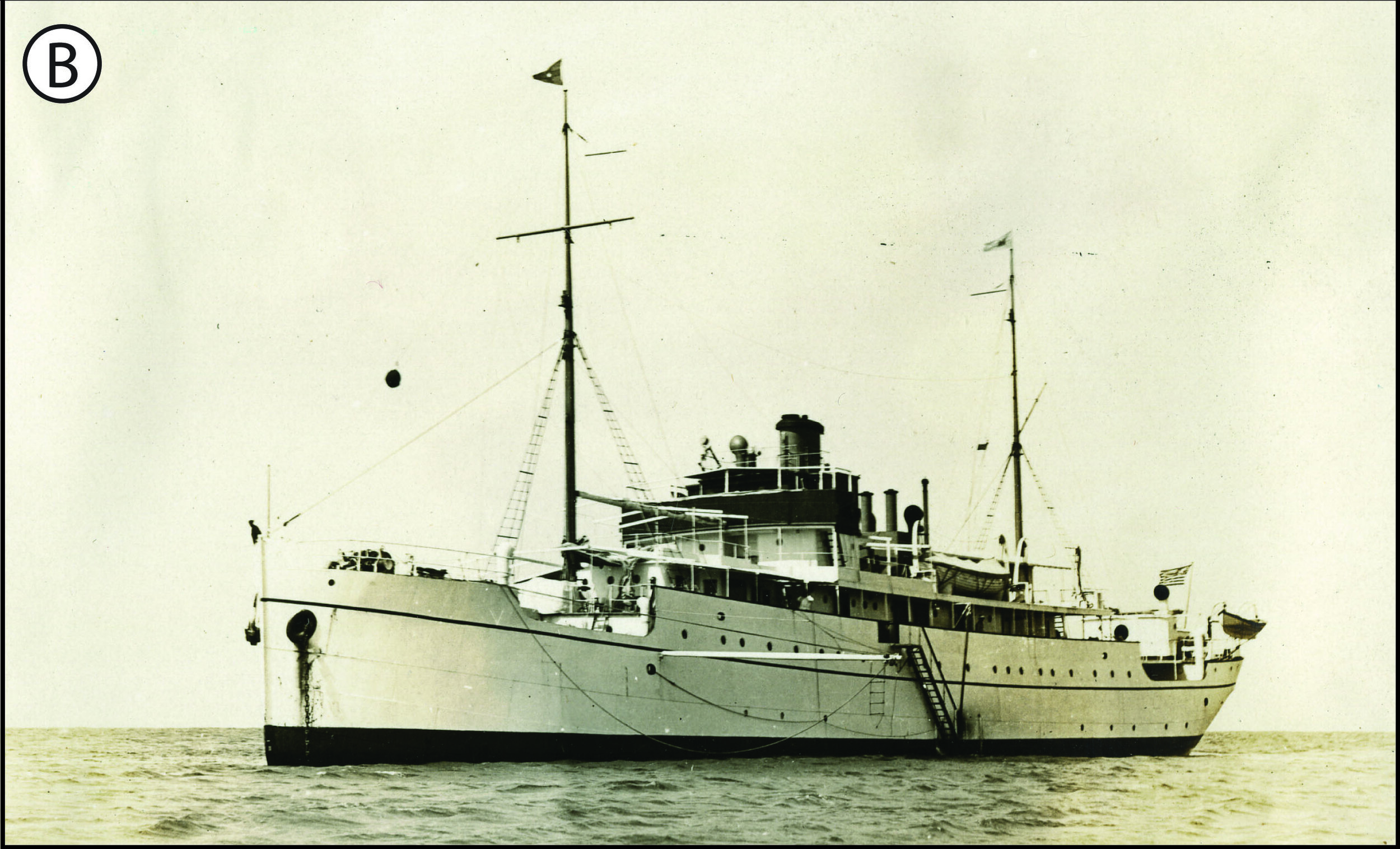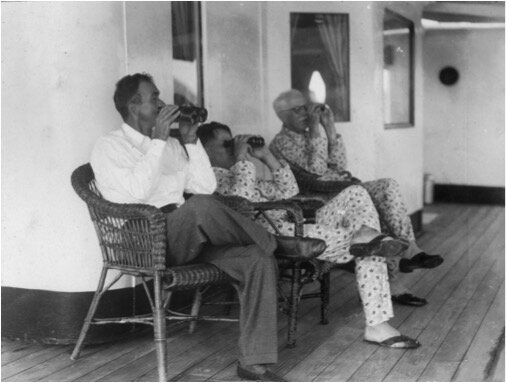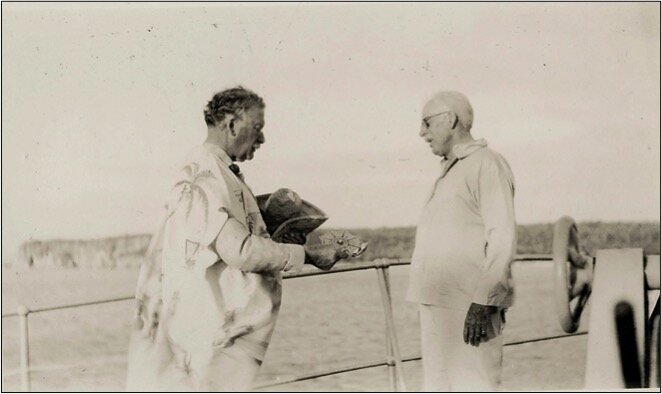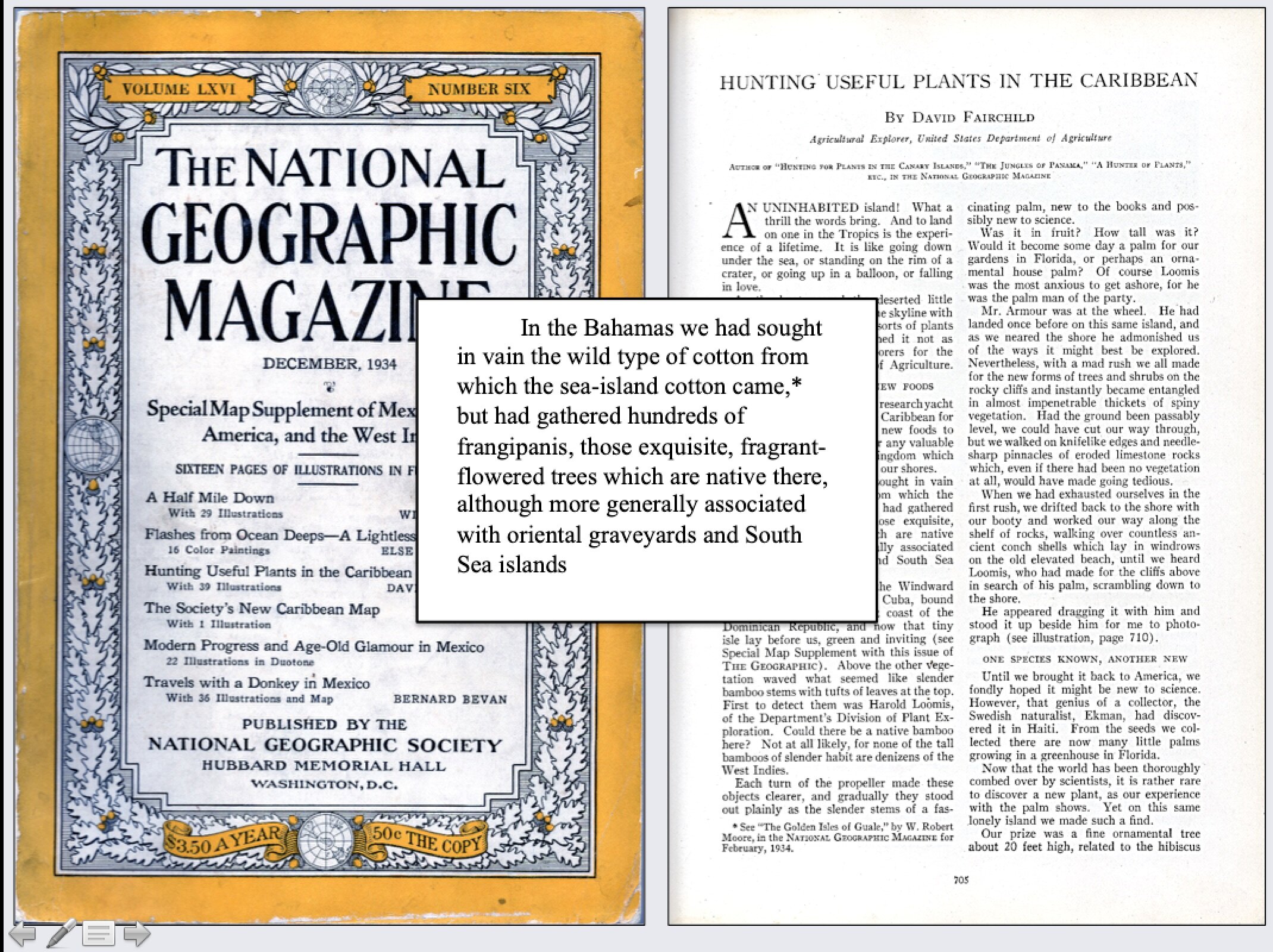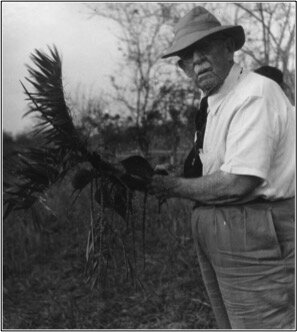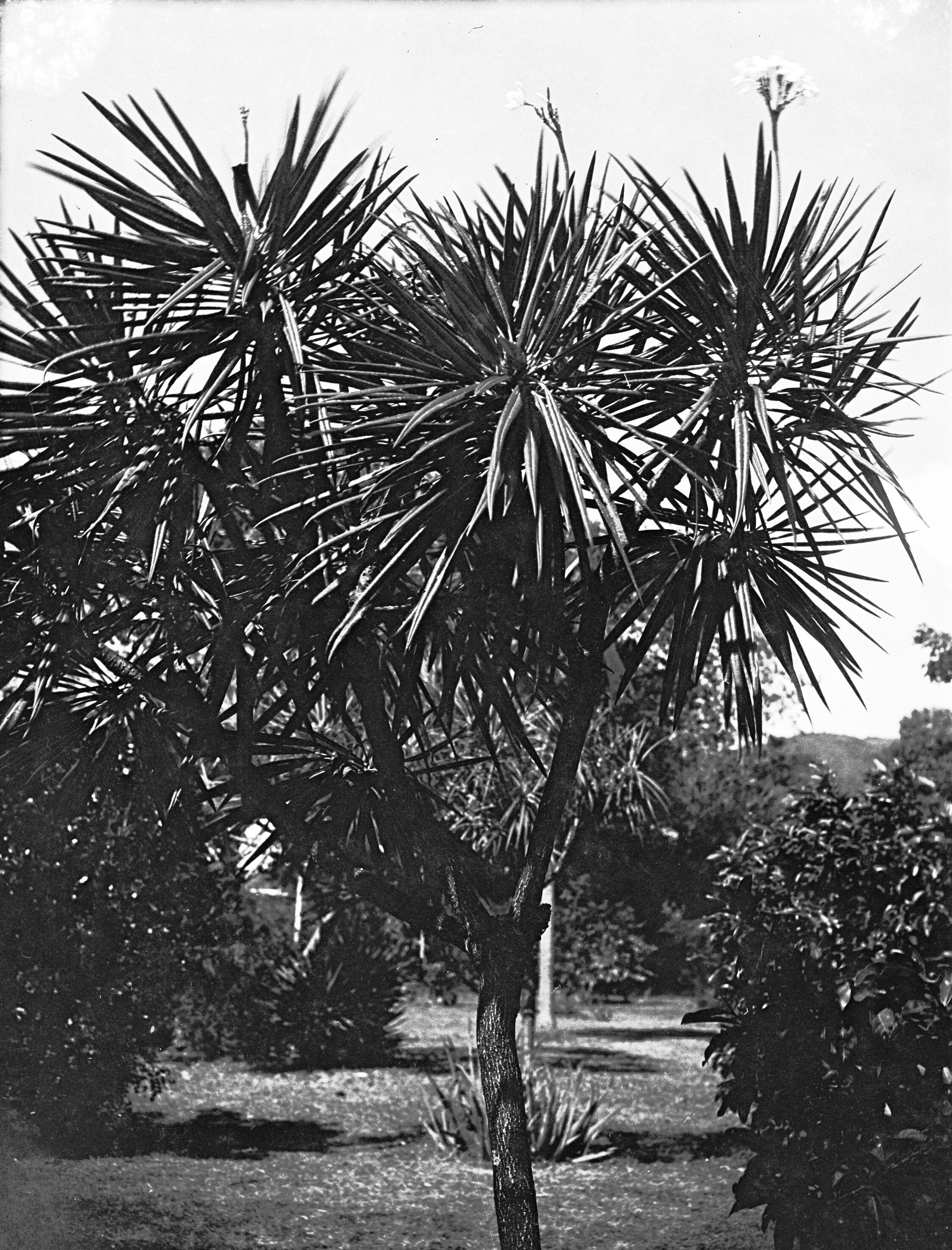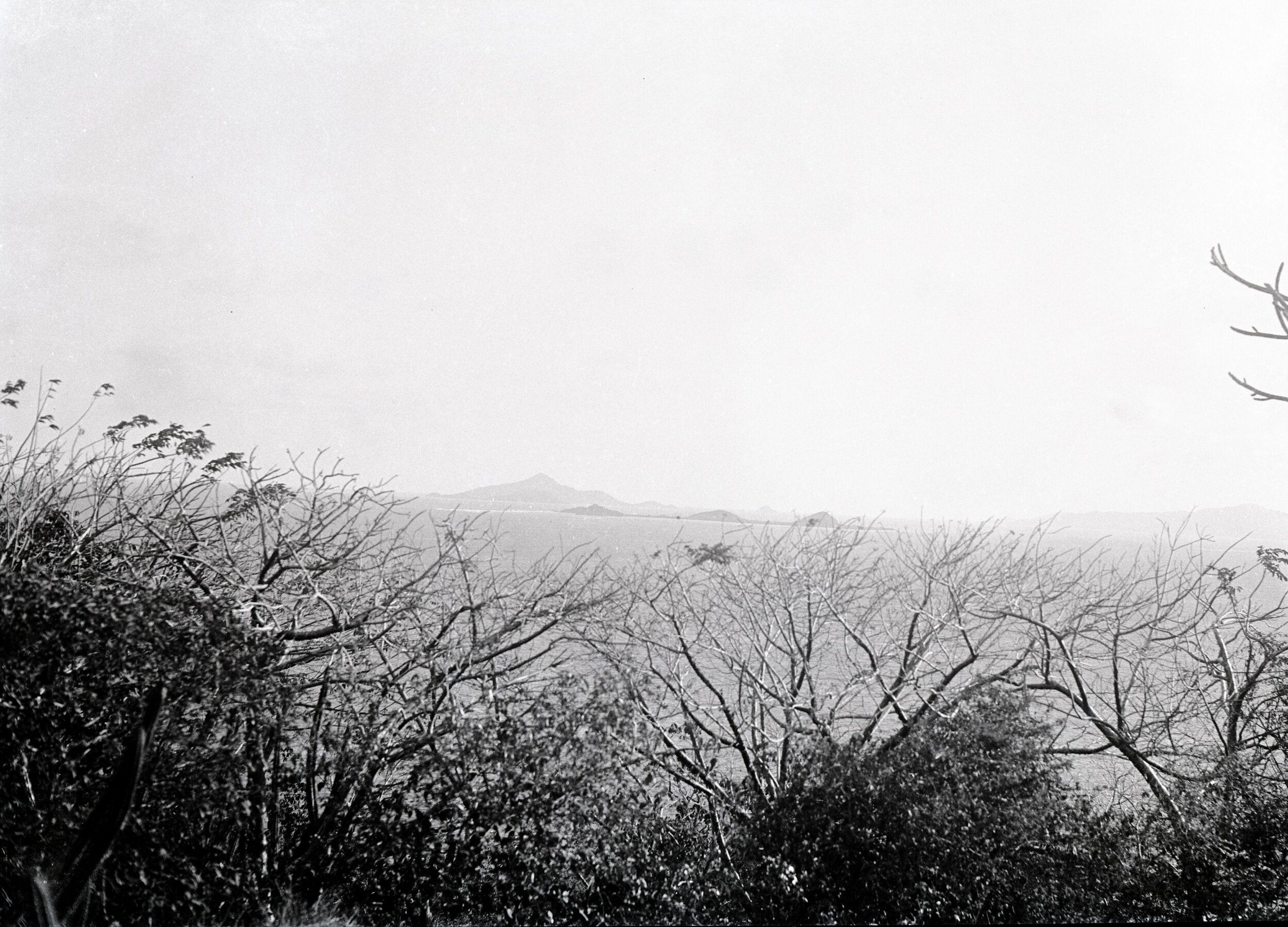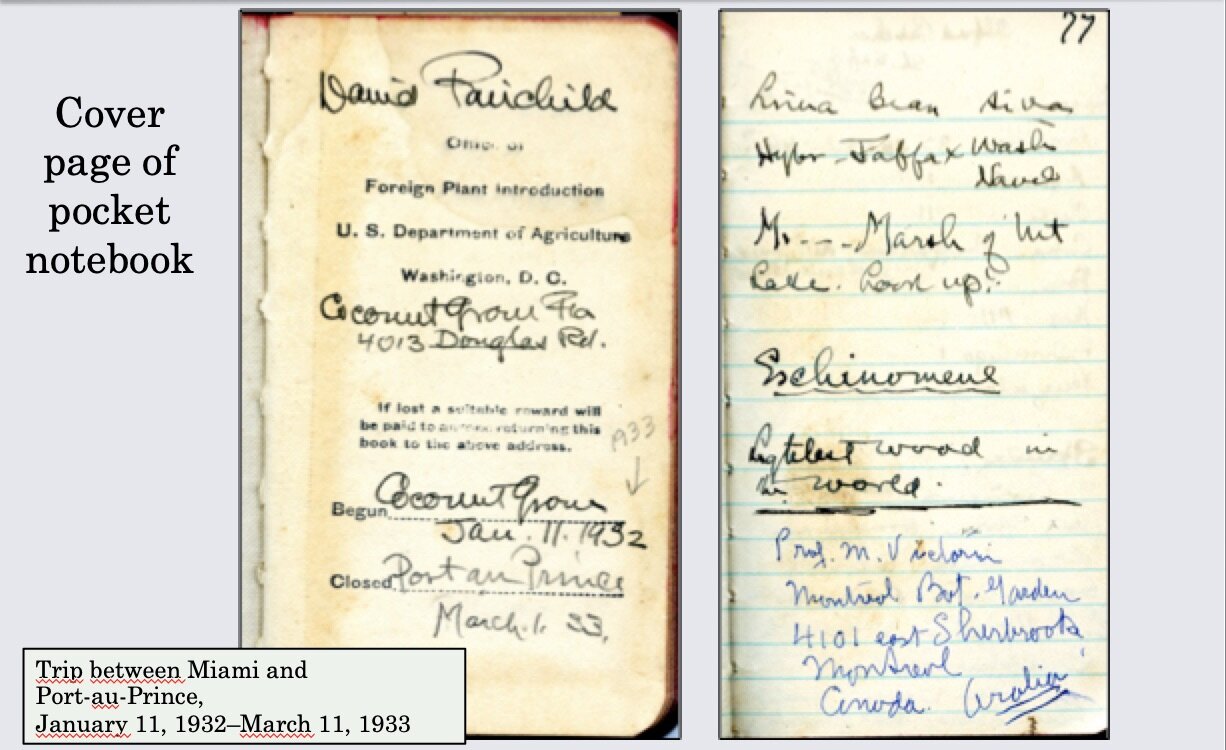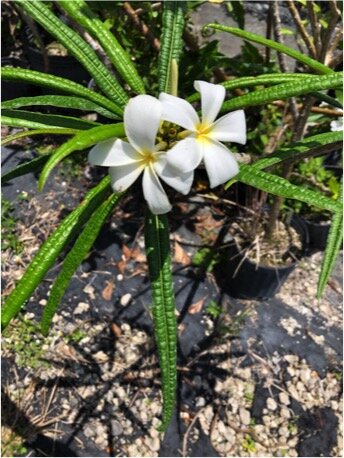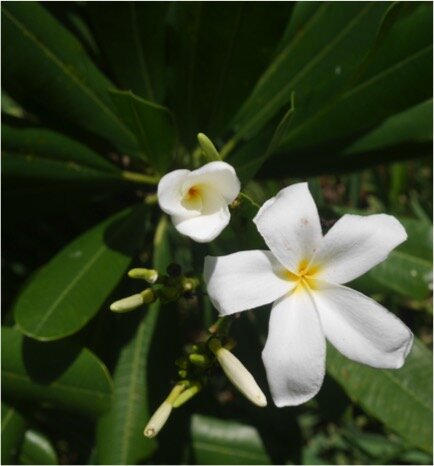Plumeria in the Fairchild Archives
David Fairchild, Beata Island, 17 January 1932.
**Notice the sea snail as an ornament on his hat.
Photo 12721, negative 57774 in Dorsett (1931–1932).
Photo credit: Palemon H. Dorsett.
Botanical gardens are urban havens and not only pillars for conservation, education, and research, but also for exploration. Fairchild Tropical Botanic Garden (FTBG) was founded in 1938 and named after famous plant explorer, Dr. David Fairchild. Fairchild was a meticulous record keeper and the Fairchild Archives hold many historical documents and photos related to his travels. He forged a path for botany during a time when exploration was very important to the United States. As such, thousands of germplasm collections (plant material, such as seeds or tissue) were being introduced to agricultural research stations around the United States. You can read all about his adventures in the book, The Food Explorer by David Stone, or my synopsis in a previous blog post.
Fairchild was primarily interested in edible plants, but also in economically important plants for gardening. Several undergraduate FIU students (Raquel Chevarria, Maria Camas, and Meily De Leon) have been working with my advisor, Dr. Javier Francisco-Ortega (FIU, Department of Biological Sciences), on botanical history projects utilizing the archives. I was curious if there were any photographs or records of Fairchild collecting wild Plumeria, commonly known as frangipani, in any of his travels, so the students agreed to see what they could find.
Fairchild’s expeditions were in the early 1900s, months long in duration, and usually via steamboat containing a team of botanists. So Javier’s undergraduate team dug into the archives looking for any details from one particular trip, aboard a boat called the Utowana, which made two expeditions to the West Indies from 1931–1933. The boat was owned by Allison Armour who was a wealthy research sponsor, and among the participants in this trip were Fairchild’s wife, Marian, and his daughter Nancy (see photos below).
The West Indies are the center of diversity for Plumeria, the genus of plants that I am studying for my dissertation. Fairchild was a meticulous botanist who kept travelogues, collection books, pocket notebooks, photographs, and herbarium specimens. Additionally, the botanists who traveled with him also had their own records. FTBG contains over 500,000 documents, over 100,000 photos, and 200,000 herbarium specimens. Though there is a dedicated team of volunteers at Fairchild Tropical Botanic Garden who are working to digitize all of these materials, there is still some detective work to be done when looking for something in particular.
We found several records, photos, and herbarium specimens of Plumeria from this expedition. Interestingly, we also found the only publication by David Fairchild about this expedition to the West Indies, in National Geographic. In the article Fairchild states that the purpose of the expedition was to look in the Bahamas for a type of Caribbean wild-growing cotton (Gossypium barbadense), long-fibered cotton that grew very poorly in the US but was sought after for its superior quality for textiles. This species had been hybridized with a short-fibered cotton (Gossypium hirsutum) to create cotton known as the Sea Island cotton. The Sea Island cotton grew very well in the southeastern United States but was under attack by a weevil, so the team was on a quest for another strain. He also mentions “we had gathered hundreds of frangipanis, those exquisite, fragrant-flowered trees which are native there, although more generally associated with oriental graveyards” (see photo below). Though we didn’t find ‘hundreds’ of records of their quest for frangipani, we did find some interesting things. The most recent volume of the Tropical Garden Magazine contains an article outlining our findings. You can read it here.
Acknowledgements: Maria Camas (Global Learning Medallion Program, LACC Global Learning Medallion Research Fellowship Program & FIU honors College Student), Raquel Chevarria (Global Learning Medallion Program), Meily De Leon (FIU Honors College Student), FTBG Archives Volunteers (Louise Bennett, Carol Dietrick, Joseph Dietrick, Nancy Korber, Eleanor Lahn, Janet Mosely, Mary Jo Robertson, Marianne Swan), Brett Jestrow (FTBG Herbarium Curator).

